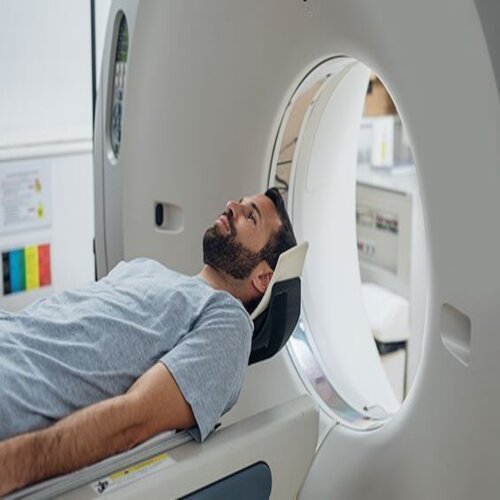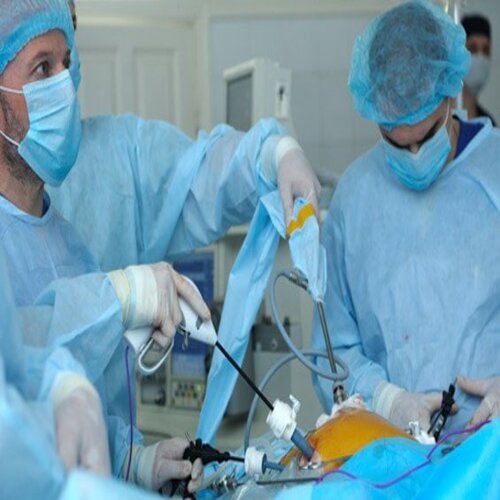Spine Surgery
$2.268,00
The below mentioned are some common type of spine surgery procedures in India.
Spinal Fusion – Spinal fusion is a surgical procedure which is utilized to correct the small bone problems in vertebrae. In this surgery, surgeons will joint two or more bones.
Scoliosis – Scoliosis is an oblique curvature of the spine that happens regularly amid the growth of spurt just before puberty. To treat the abnormal curvature in the spine this scoliosis medical procedure is performed.
Laminectomy – Bony overgrowths inside the spinal canal can limit the space available. This causes pressure which leads to pain, weakness or numbness that can radiate down the patient’s arms or legs. In laminectomy, the surgeon removes the lamina.
Lumbar Discectomy – A herniated disc in the lower back, press a nerve root which may cause extreme leg pain, numbness, or weakness. During a lumbar discectomy, the surgeon removes this lumbar herniated disc to give ease from these symptoms. This is also known as Microdiscectomy or spinal decompression.
Percutaneous endoscopic lumbar discectomy (PELD) is a minimally invasive spine surgery technique for the decompression of the lumbar disc space.
Kyphoplasty – Spinal fractures or injuries or lesions are small break points in the thick mass of bone, which are formed by cancer or osteoporosis. Lesions lead to the breakdown or compression of a vertebra, this can result in pain and kyphotic distortion. Kyphoplasty or vertebroplasty is a surgical procedure to treat these spinal fractures or lesions.
Herniated Disk Surgery – A herniated disc stretches out beyond the capsule and pushes into the spinal canal. This happens for the most part in the lumbar vertebrae (lower back), which causes pain, discomfort, numbness, tingling, and weakness. Spine doctors perform herniated disc surgery to expel this protruding portion of the disc.
Product Description
Spine surgery, traditionally an open surgery is performed to treat diseases related to the spine. With advances in surgical technology, several Minimally Invasive Spine Surgery (MISS) techniques have evolved over a period of time. Full Endoscopic Spine Surgery is the recent innovation that is performed in select centers of excellence for spine diseases. Yashoda Hospitals is the only center to perform full endoscopic spine surgeries in Telugu states, which makes it one of the few hospitals in India to provide the treatment.
Spine surgery is the most ideal way to treat spinal cord (medulla spinalis) injuries. This is performed on an immediate premise to improve a patient’s capacity to function properly and to decrease pain. Spine surgery is an important and necessary treatment procedure for patients who have a progressive neurological loss of function or sudden onset of bowel or bladder incontinence.
The spinal cord is a collection of nerves from the base of the brain to down back. Thirty-one sets of nerves leave the spinal cord and go to the chest, abdomen, arms, and legs. These nerves also control the functionality of some important organs in a body which involves heart, lungs, bladder, and bowels.
The spinal cord is one of the most sensitive body parts. Spinal cord injury (SCI) happens when there is injury or damage to the spinal cord either from trauma or cancer or tumor infection or loss of its normal blood supply.
Spine surgery can essentially overcome three problems.
- Decompress the spinal cord or a nerve root.
- Settle down an unsteady or painful component
- Decrease a distortion (for example scoliosis medical procedure in the thoracic spine).
In open surgery, the affected area is operated with a long, open surgical approach to enable the surgeon to view and access the operational space. In minimally invasive spine surgeries, the spine surgeon makes small incisions to guide the instruments and/or microscopic video cameras. The surgeon uses special surgical tools (small tubular systems or micro incisions) to get into the spine through small incisions. Some of the common minimally invasive techniques include:
- Percutaneous endoscopic surgery
- Full endoscopic surgery
- Thoracoscopic access surgery
- Surgery using a tubular retractor
Full endoscopic spine surgery offers the combined results of open microscopic surgery and non-invasive procedures. The benefits of full endoscopic techniques over open procedures include:
- High success rates
- Daycare procedure with reduced hospital stay
- Radical treatment instead of symptomatic care
- No sedation but local or epidural anesthesia, the patient is awake.
- Stitchless spine surgery
- Microscopic incision
- Minimal or no blood loss
- Reduced postoperative pain
- Faster recovery
- Improved quality of life
- Spare damage to adjacent muscles and nerves
- No soft tissue injury
- Avoid excess bone removal
- Preservation of spinal mobility
- Immediate relief from symptoms
- Reduced risk of complications and infections









Reviews
There are no reviews yet.